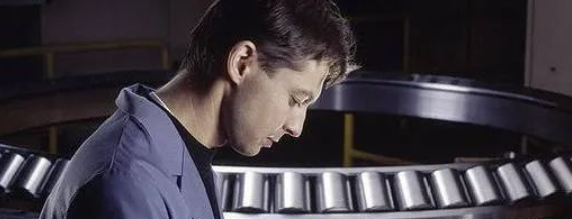| About Us | Contact Us | Language Choose: |
    
|
| About Us | Contact Us | Language Choose: |
    
|
Keywords: roller bearings, spherical roller bearings, taper roller bearings, cylindrical roller bearings

Summary of Bearing Selection
(7) the installation method of the selected bearing
1. Bearing load
Load size The load size is usually the determining factor in selecting the bearing size. Roller bearings have greater bearing capacity than ball bearings with the same overall dimensions. Usually ball bearings are suitable for light or medium load, roller bearings are suitable for bearing heavy load.
For pure radial load, deep groove ball bearing and cylindrical roller bearing can be selected. Thrust ball bearing and thrust cylindrical roller bearing can be used for pure axial load. When there is radial load and axial load (combined load), angular contact ball bearings or tapered roller bearings are generally selected. If the radial load is large and the axial load is small, the deep groove ball bearing and the cylindrical roller bearing with the inner and outer rings have the flange can be selected. If there is also a large deformation of the shaft or shell and the installation of neutral difference, self-aligning ball bearings and self-aligning roller bearings can be selected. If the axial load is large and the radial load is small, the thrust angular contact ball bearing can be selected. If the four-point contact ball bearing also requires the self-aligning performance, the thrust self-aligning roller bearing can be selected.
2. Rotation accuracy
For the majority of machinery, choose a level 0 tolerance of bearing is enough to meet the requirements of the host, but on the axis of rotation accuracy have strict requirements, such as spindle, precision machinery and instrument etc., should choose high tolerance grade of deep groove ball bearings, angular contact ball bearings, tapered roller bearings, cylindrical roller bearings and thrust angular contact ball bearings.
3. Noise and vibration
The noise and vibration of the bearing itself are generally very low. But for small and medium-sized motors, office machinery, household appliances and instruments, which have special requirements for noise and running stability, low noise bearings are usually selected.
4. The rigid
The rigidity of rolling bearings is determined by the elastic deformation when they bear the load. In general, this deformation is very small and can be ignored. But in some machinery, such as machine tool spindle system, the static stiffness and dynamic stiffness of bearings have a great influence on the characteristics of the system. Roller bearings have higher stiffness than ball bearings. All kinds of bearings can also improve the rigidity of different degrees by properly "pretightening".
5. Speed
The working speed of rolling bearing mainly depends on its allowable operating temperature. Bearings with low friction resistance and less internal heat are suitable for high speed operation. When only bearing radial load, deep groove ball bearing and cylindrical roller bearing can achieve a higher speed, if bearing combined load, angular contact ball bearing should be selected. High precision angular contact ball bearing with special design can achieve high speed. The speed of all kinds of thrust bearings is lower than that of radial bearings.
6. Allow space
When mechanical design, generally determine the size of the shaft, and then choose the bearing according to the size of the shaft. Usually, the small shaft selection of ball bearings; Large shaft selection of cylindrical roller bearings, self-aligning roller bearings, tapered roller bearings. If the radial space of the bearing installation part is limited, the bearing with a smaller radial section height should be used. Such as needle roller bearings, some series of deep groove ball bearings, angular contact ball bearings, cylindrical roller or self-aligning roller bearings and thin-walled bearings. If the axial space of the bearing installation part is limited, a bearing with a smaller width can be used.
7. Friction torque
The friction resistance of ball bearing is smaller than that of roller bearing, and the friction resistance of radial contact bearing is smaller under pure radial load. Under pure axial load, the friction resistance of the axial contact bearing is small. When combined load is applied, the friction resistance of angular contact bearing with close contact Angle and load Angle is the least. In the instruments and machinery that require low friction torque, ball bearings or cylindrical roller bearings are more suitable.
8. Axial movement
The common configuration of bearings is to install a set of axially positioned "same bearing" at one end of the shaft, and a set of axially movable "swimming bearing" at the other end, in order to prevent the phenomenon of sticking due to thermal expansion and contraction of the shaft. The "walking bearing" which is often used is cylindrical roller bearing with inner ring or outer ring without baffle edge. At this time, interference fit can be used for the match between inner ring and shaft or the match between outer ring and housing hole. Sometimes, non-detachable deep groove ball bearings or self-aligning roller bearings can also be selected as swimming bearings, but in the installation of inner ring and shaft or outer ring and housing hole should choose clearance match, in order to ensure that the inner ring or outer ring has enough freedom of axial movement.
9. Installation and disassembly
Bearings with cylindrical inner holes are used for installation and disassembly of more frequent machinery. Separable angular contact ball bearings, tapered roller bearings, separable cylindrical roller bearings, needle roller bearings and thrust bearings should be preferred. Bearings with conical inner holes can be installed on the journal, or on the cylindrical journal with the help of a tightening sleeve or a withdrawal package, easy installation and disassembly.